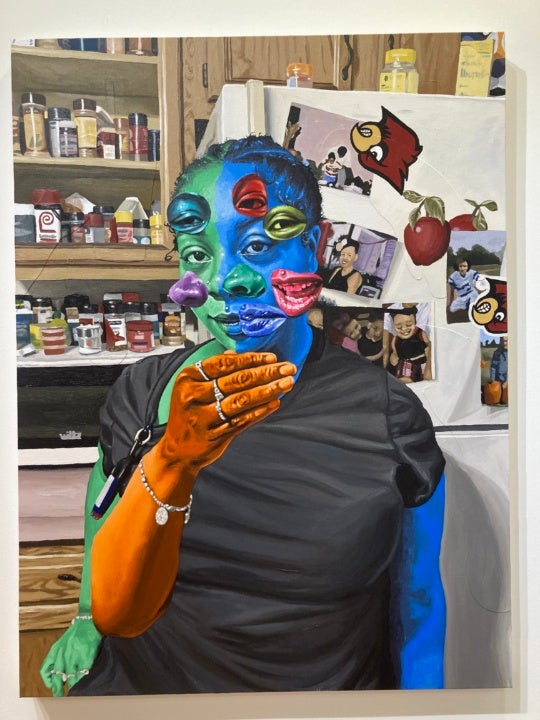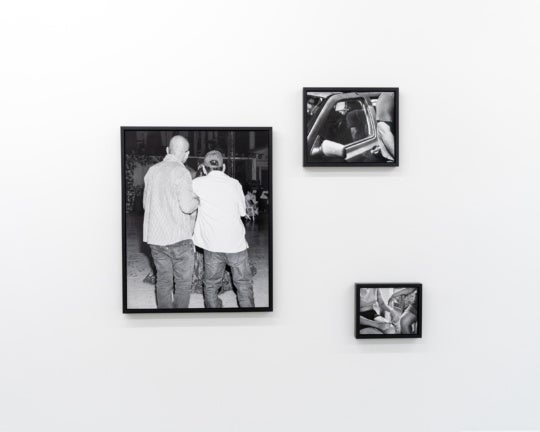This is part two of Curt Holman’s exploration into AMC’s TV series The Walking Dead. Find the first installment here.
The Walking Dead’s most haunting, indelibly Southern moments came amid the AMC show’s much-criticized second season.
The 11th episode, titled “Judge, Jury, Executioner,” included a scene with young Carl Grimes (Chandler Riggs) straying from the farm that served as the group’s temporary haven to explore the nearby woods. Carl comes upon a bend in a creek and discovers a lipless, shirtless walker, with greyish skin and pale, colorless eyes, held up to its knees in mud.
Initially frightened, Carl begins throwing rocks at the trapped zombie and taunting it, approaching until he’s just out of range of its grasping fingers. Carl demonstrates the kind of reckless behavior you’d expect from an unsupervised boy—especially given that he’s probably suffering from some kind of post-traumatic stress disorder, what with all the horrors he’s witnessed. It’s hard to blame the boy for punishing a living (well, undead) symbol of the catastrophe that has struck his family and the rest of humanity. The scene suggests a team-up between George Romero and Samuel Beckett, with one of the foolish living teasing a relentless representation of death.
I’ve lived most of my life in Atlanta, and it seems that virtually every place in the city lies within walking distance of a shady, muddy creek just like the one in that scene. The Walking Dead’s location scouts have keen eyes for emblematic Southern locations, the kinds of hidden corners that can be both idyllic and ominous. Although The Walking Dead’s plot would unfold essentially the same way, no matter its setting, the Southern location can amplify its extremes.
At times The Walking Dead overlaps with the storied genre of the Southern Gothic, which is known for simmering sexuality and explosive violence. As a genre, Southern Gothic rests on many building blocks, including the region’s climate and geography. It’s like the South’s feverish temperatures serve as a spur to transgressive action, while the prevalence of woods, hills, and gullies provides hidden places for doing bad things (in contrast with the wide open spaces of the Southwest and the Plains States). Even though Rick Grimes hails from the South, The Walking Dead paints him more as an upstanding lawman out of the American West.
In Southern Gothic novels and movies, evil deeds tend to have internal origins, as if family skeletons or historical crimes reverberate into the present. Most of the pressures on The Walking Dead’s characters come from outside the characters, through the collapse of the social order and the need to survive. There are exceptions, like the through-line in the first two seasons involving Rick’s best friend, Shane (Jon Bernthal), who slept with and probably impregnated Rick’s wife Lori (Sarah Wayne Callies) at the beginning of the outbreak, when they both believed Rick to be dead. After Rick turns up alive, Shane turns into a jealously bullying figure of festering resentment in a seemingly endless subplot.
A different kind of dark secret emerged when the survivors found shelter on the picturesque farm of homespun veterinarian Hershel (Scott Wilson). The farm’s gray, clapboard barn looms as a place of mystery until the group discovers that seemingly sensible Hershel has been using it to store walkers—including infected members of his family—in the vain hope that a cure to the zombie plague will be found. After the zombies are slain, the barn remains a bad place, with Rick and his colleagues imprisoning, torturing, and nearly executing a prisoner there. Through the season, the barn looms in the distance from Hershel’s porch, like a symbolic storehouse of misdeeds and failures.
On an often painfully humorless show, Hershel’s farm provides the setting for one of its best, darkest jokes on the episode “Cherokee Rose.” The group inspects the property’s wells for fresh water and discovers a walker has fallen into one. It splashes around noisily but can’t get out, so fleet-footed Glenn (Steven Yuen) goes to considerable risk to climb down into the lightless well, attach a rope the walker and then help the others pull it out. At the lip of the well, however, the zombie’s top half separates from bottom and its legs, hips and innards slide back into the well, poisoning it. Rarely has slapstick been so grotesque.
With its despoiled wells, barns, and ditches, The Walking Dead suggests that any rural location that could conceal a cannibal ghoul probably does. At times, the show’s undead extras reveal an unsettling patience, as in the kind of scenes that reveal a zombie or two standing patiently in anabandoned house or wrecked pharmacy, just waiting for something to happen. In one of the show’s most weirdly beautiful moments, Rick sees a lone zombie moving through a field like an ambulatory scarecrow at the magic hour before sunset. It’s like, whether in city or country, the dead fill in all the empty places.

It’s possible that the show’s unsafe, fallen farms and small towns provide a metaphor for the economic tribulations such places face in the reason world . The show’s current season, now shooting in Senoia, Georgia, pits Rick’s group, having found a new home in a prison, against a fortified town run by a tyrannical governor (David Morrissey), thus setting two different concepts of community against each other.
The Walking Dead’s third season has been more compelling than its earlier ones, in which the viewer’s attention can easily drift to the landscape because the characters aren’t terribly interesting. Rick and company have different functions and represent different attitudes—bitter loners, Earth mothers, country sages—but you can imagine them all living in the same rather homogeneous small town. On Lost, however, the castaways carried lots of complex, interesting baggage and sharp philosophical differences, and they showed a diversity of class and ethnicity. The Walking Dead’s characters resemble the dramatis personae of the average Stephen King book—which isn’t surprising, as original show runner Frank Darabont has helmed three King movie adaptations—only without this show’s dramatic momentum to propel them along.
One of The Walking Dead’s enduring mysteries remains why the show commands such popularity. Certainly the zombie make-up attracts hardcore gore fans, but the gross-outs alone wouldn’t keep people coming back, let alone make them proliferate. It could be that the classy imprimatur of AMC draws a viewership intrigued by violent horror, but who wouldn’t play a zombie-shooter video game or leave their house to see a Living Dead movie. People who dislike the tendency of, say, slasher films to treat their characters as interchangeable sacrificial lambs would appreciate The Walking Dead’s tendency to invest in real people, despite some flatness in their characterizations.
Plus, The Walking Dead benefits from the overall appeal of the zombie genre to allow viewers to face death in a safe, protected context. Death tends to erase people’s differences, and the members of the show’s zombified mobs share a kind of equality denied people in life. The inexorable, ravenous, undead horde seems destined to turn everyone into a walker, but each character’s escape represents another day to enjoy being alive. The Walking Dead’s audience gets a chance to be like Carl at the creek, flirting with death while remaining out of its reach.
Note: Find Walking Dead Atlanta shooting locations here.




